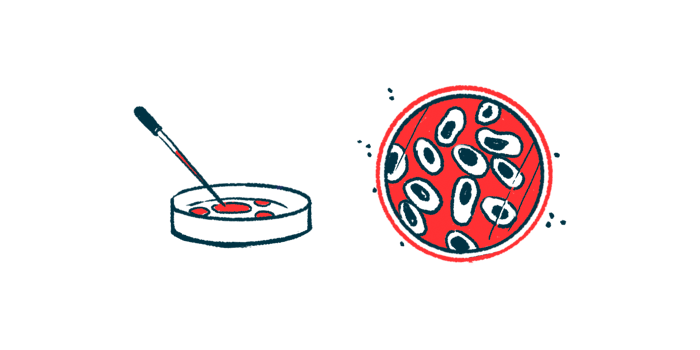Preclinical study finds antidepressant may boost SMN
Study points to 'new therapeutic approach,' researchers say

A preclinical study found that blocking the SMPD1 enzyme with available drugs such as the antidepressant clomipramine increases the levels of SMN, the protein missing in spinal muscular atrophy (SMA), potentially offering a new treatment strategy.
“The strategy presented here represents not only a new therapeutic approach for this disease, but also a new way to study its molecular basis,” wrote the team of researchers in Spain.
The study, “Inhibition of acid sphingomyelinase increases SMN levels and connects sphingolipid metabolism to spinal muscular atrophy,” was published in Biomedicine & Pharmacotherapy.
SMA is caused by mutations in the SMN1 gene that result in a shortage of SMN, a protein needed for the maintenance of motor neurons, the specialized nerve cells that control voluntary movement. When SMN is missing, motor neurons die, causing muscle weakness and other SMA symptoms.
The SMN protein can also be produced by the SMN2 gene, but this backup gene only produces about 10% of working SMN. One treatment strategy for SMA involves boosting the activity of the SMN2 gene to increase SMN production.
Computers and worms yield clues
In a search for existing medications that could be repurposed to increase levels of the SMN protein, the researchers first used computer-based analysis to scan large databases for genes that may be involved in suppressing SMN production.
Nine of the identified genes had medications known to block their activity, and these genes were selected for further experiments. The team then evaluated the effects of suppressing each of these genes in a simple animal model, the worm Caenorhabditis elegans (C. elegans).
The researchers tagged SMN with a red fluorescent marker to easily track where the protein was located and how much of it was present in living worms. When the candidate genes were suppressed, the researchers could observe whether levels of SMN increased, decreased, or stayed the same.
The team found that suppressing one of the genes, SMPD1, increased the levels of SMN in the worm model. The same was observed when the gene was suppressed in lab-grown motor neurons from healthy mice and motor neurons derived from people with SMA type 1 or type 2.
SMPD1 provides instructions for producing an enzyme called sphingomyelin phosphodiesterase 1 (SMPD1), that converts a fatty molecule called sphingomyelin into another fatty molecule, ceramide.
Sphingomyelin also binds to cholesterol to form signaling centers that allow communication between nerve cells. Mutations in the SMPD1 gene cause Niemann-Pick disease, a neurodegenerative condition.
The team analyzed the effects of three known suppressors of SMPD1 in the C. elegans model, and confirmed that all increased SMN protein levels. Clomipramine, an antidepressant sold as Anafranil and with generics available, showed the most favorable safety profile, being the only one not associated with development delays in the worm.
Clomipramine treatment also resulted in an increase in SMN levels in lab-grown motor neurons derived from SMA patients. These nerve cells also showed less damage to their branches or projections, called neurites, indicating that “clomipramine treatment attenuates neurite degeneration” in SMA patient-derived motor neurons, the researchers wrote.
“However, the precise mechanisms responsible for this effect remain to be fully elucidated and warrant further investigation,” they wrote.
Still, “both the use of ceramide and … SMPD1 as markers of disease progression and [SMPD1- suppressing] drugs represent a new milestone in SMA, which could form the basis for a future clinical trial,” the team concluded.








